wolfbirder
Well-known member
I spent a superb four nights in Speyside at the end of April, based at Grantown On Spey, ultimately seeing nearly all my targets including 3 Capers, 16 Black Grouse, 3 White-billed Divers, American White-winged Scoter, 7 Parrot Crossbills, and 3 'putative' Scottish Crossbills.
I say 'putative' because they were sightings only based on sight.
The opportunity arose to return from 29 May to 1 June, at the same hotel - the Craiglynne in Grantown On-Spey for 3 nights for just £118, which is excellent value for the area which is usually far more expensive. The hotel's windows are crumbling but other than that it is fine, and excellent value for money, though I took my electric fan and toaster with me.
Birding was far tougher this time, just a month later, as we enter summer, and the forests seemed dead after the first few morning hours. The weather was absolutely sunny and lovely for all 3 days, but this has an adverse effect on birding as people flock outside, which is understandable, but Lochindorb was like 'Lochindorb-on-the Sea' with around a hundred people - kayakers, small rubber dingies etc, enjoying the water and even clambouring up the ramparts of the old castle on the small island. What this meant for the Black-Throated Diver pair sometimes present I don't know, but I suspect they might not be back for a while. I would go on to see a stunning Black-throated Diver further north, thanks to confidential information provided on Birdforum, so many thanks for that as it was a species I missed in April and this was my lifetime best sighting.
But the primary aim of this break was to connect with Scottish Crossbill.
I appreciate that there is a lot of debate about WP Crossbills being split into 3 species due to the absence of any divergence in DNA, but concurrently sympatric or assortative breeding does occur. Anyway, I cannot attempt to question that here. You will have made your own mind up about that I am sure.
Many people on BUBO have Scottish Crossbill on their list, partly based on the fact that back in the 1980s, 1990s, and 2000s it was thought that any large-billed Crossbills present would very-likely be Scottish, as it was wrongly thought that Parrot Crossbills were rare in the Highlands area all years. This well-documented study by Ron Summers and Stephen Buckland in 2007-08 study suggested that just 1% of Crossbills in the area were Parrots (around 100 pairs), whilst there were nearly 7,000 pairs of Scottish Crossbills and even more Commons. But you have to consider that the situation fluctuates year to year based on irruptions, but many people including those Scots who studied Crossbills closely, suggested that there were usually considerably higher numbers of Parrots present. But this explains why many birders comfortably ticked Scotsbill. Nevertheless, Summers and Buckland have carried out extremely informative and ground-breaking research and enabled the 3 species to be separated and identified via sound. Their endless research has been invaluable.
Crossbill numbers vary considerably, based on the prevailing available pine-cone crop of spruce, larch, and Scots Pine. So it is notoriously difficult to anticipate where exactly you might encounter Crossbills, though there are certain, well-known core areas on Speyside and Abernethy Forest that often deliver, such as the well-known locations of Anagach Woods (Poorhouse Wood section especially), Dell Wood, Carrbridge Cemetary, Curr Wood, Loch Garten / Loch Mallachie, Rothiemurchus, and Boat of Garten Woods (aka Fairy Hill Woods). These are the areas to try. The cones ripen in April, opening while they are still on the tree. Cone production is variable. With good seasons, a mature tree can produce 3000 cones, but only occurring every 3-5 years, while in between a tree will produce few cones, or none at all. So hence it becomes very difficult to predict their exact whereabouts. Some years are said to be excellent, some years poor, so this leads to Crossbills forever moving around even if Scotsbill are said to be somewhat sedentary, and it leads to irruptions from Norway or elsewhere when there is a pine-cone failure there. The reverse can happen. Indeed the site which was so profitable for me just a month ago was deadly quiet just a month later. So you have to work hard and put the footwork in.
There are further considerations for birders looking at crossbills - it is often suggested that any Crossbills feeding on Scots pine will be 'large-billed', and whilst this may hold true to some degree, it is important to remember all 3 species will take whatever is available at different times of the year, and even Common Crossbills, with smaller bills, may attempt to feed on these if the individual cones are partially open. Lindsay Cargill highlighted the complexity by highlighting that Scottish Crossbill can occur in alien conifer plantations but generally at particular times of the year, and that by February, Scottish Crossbills are usually back on territory in either native or plantation Scots pine. The problem being so is Common Crossbill, though some will feed on Larch until April if it is still present. But he also highlighted that during that specific winter, the Commons, and Scottish for that matter, were predominantly found on Scots pine throughout the year due to a Larch and Spruce crop failure. Generally though, he felt that Scottish move on to Larch in late summer and early Autumn and will flit between Larch and Scots Pine through the winter. I think this highlights the complexity of interpreting the movement of Crossbills.
It is also suggested that the way the respective Crossbill species open the pine-cones also helps with identification, but again, you need to understand the condition of individual pine-cones to truly be able to interpret this. Are they green or brown for example? I would have thought that this only comes with familiarity and experience, and for someone like me from Wolverhampton.........well you can imagine -. But what is clear is that only Parrot Crossbills can feed on, or prize open 'closed' Scots pine-cones in winter.
-. But what is clear is that only Parrot Crossbills can feed on, or prize open 'closed' Scots pine-cones in winter.
Let me make this clear, this is just a simple attempt of a (simple) birder to summarise the Crossbill issues, nothing more. People like Lindsay and others will be laughing at my pathetic attempt to summarise what is an incredibly complex assessment. But their reports and blogs have provided me with incredible snippets of information over the years. Apologies also, if this report gets a bit technical at times, but the attached links are actually very helpful and are critical if you want to do a similar trip.
All 3 Crossbill species breed early, Common Crossbill first of all in February generally (though they may breed repeatedly in a very good pine cone year), then Scottish, then Parrot in April / May. So, it is worth noting whether any flocks seen contain fledglings that are not yet feeding independently, as these can be good pointers. Though I did indeed see a few streaky Crossbills, they were all feeding independently, so it didn't tell me much. At the end of April (my last trip), I encountered a small flock of 6 males, again this 'may' indicate that the females are sitting on the nest, and at that time of year this would likely mean they were Parrot or Scottish but again these are not totally-defining points, but simply things to consider. But I am repeatedly told by Scots birders that 'only' 'large-billed' Parrot Crossbills or 'small-billed' Common Crossbills can be safely assigned to species based on sight-only, and that really, you need to record the sound and try if possible to get a sonogram assessed. This can 'potentially' be done by using the 'record' facility on your I-phone. On my I-phone I used 'Voice Memo's'. Most experts use far more complex equipment to make recordings, but it goes to show that even with just an I-phone, such rudimentary tools can sometimes do the job successfully. But critically, ensure you are away from background noise such as distant traffic as this can compromise the ability to obtain a sonogram via your I-phone. The recording using just an I-phone may not be that clear volume-wise, so it is important that background noise is virtually excluded. The louder the call the better of course, so if you are close to the bird it is certainly better.
So, what is Scottish Crossbill?
No one really knows, but it is considered by some that the species may have evolved over a long period of time from the ancient or relict, Caledonian Scots Pine forest that was once far greater in size. Others feel that they are just a 'small-billed' form of Parrot Crossbill, or perhaps even a 'large-billed' Common Crossbill, and that they should be assigned merely as a sub-species. Ooops..........I've only gone and opened that can of worms -. But critically, whilst they all breed in fairly close proximity, they recognise each other and do not inter-breed. Studies have shown this to be true. In the hand, differences may be clear to experts even though they are minor. Parrot Crossbills are obviously slightly larger and often described as being 'bull-necked', whilst the difference in average bill-size (length, and critically depth too) is just a millimetre or two between Common and Parrot, with Scottish in-between. I recall Lindsay Cargill remarking that most birders imagine that the primary confusion lies between separating Parrot and Scottish, but in his opinion there is actually a greater issue separating Scottish and Common. I have saved and studied many close-up photos of all 3 species in the hand, and again only the extreme Common (small-billed) and extreme Parrot (large-billed) are easy to appraise even at close hand. I was also guilty of holding that belief that 'all' Parrots have that classic deep, rectangular-shaped bill with bulging lower mandible creating a curved 'S-shape'. But actually, I have even seen Common's exhibiting that bill shape, but just smaller, so 'bill-profile' is not always the defining feature birders imagine it to be. It makes you wonder whether Common's should be split into different species, such is the evident variability in their bill size. In the hand however, measurements can be taken, and the true size of the bird established, whilst photographs do not tell you that. Indeed, photographs, especially when zoomed in, betray the true feel of individual Crossbills, as I will perhaps highlight at the end of the report, with my rudimentary photos all taken by simply holding my I-phone over the scope eyepiece until I manged an image. Furthermore, the assessment of bill-size can be betrayed by something as simple as raised crown feathers, with some birds almost looking like a 'hornbill' species when the crown-feathers are lying flat. And depending on the angle of the photograph, any individual bird can look very different from frame to frame, so video clips maybe better to get the true feel of a bird. Such is the difficulty of assigning Crossbills to species from stills, that I recall Lindsay Cargill stating that quite a number of bird photographs on the internet are indeed wrongly assigned, in his humble opinion.
-. But critically, whilst they all breed in fairly close proximity, they recognise each other and do not inter-breed. Studies have shown this to be true. In the hand, differences may be clear to experts even though they are minor. Parrot Crossbills are obviously slightly larger and often described as being 'bull-necked', whilst the difference in average bill-size (length, and critically depth too) is just a millimetre or two between Common and Parrot, with Scottish in-between. I recall Lindsay Cargill remarking that most birders imagine that the primary confusion lies between separating Parrot and Scottish, but in his opinion there is actually a greater issue separating Scottish and Common. I have saved and studied many close-up photos of all 3 species in the hand, and again only the extreme Common (small-billed) and extreme Parrot (large-billed) are easy to appraise even at close hand. I was also guilty of holding that belief that 'all' Parrots have that classic deep, rectangular-shaped bill with bulging lower mandible creating a curved 'S-shape'. But actually, I have even seen Common's exhibiting that bill shape, but just smaller, so 'bill-profile' is not always the defining feature birders imagine it to be. It makes you wonder whether Common's should be split into different species, such is the evident variability in their bill size. In the hand however, measurements can be taken, and the true size of the bird established, whilst photographs do not tell you that. Indeed, photographs, especially when zoomed in, betray the true feel of individual Crossbills, as I will perhaps highlight at the end of the report, with my rudimentary photos all taken by simply holding my I-phone over the scope eyepiece until I manged an image. Furthermore, the assessment of bill-size can be betrayed by something as simple as raised crown feathers, with some birds almost looking like a 'hornbill' species when the crown-feathers are lying flat. And depending on the angle of the photograph, any individual bird can look very different from frame to frame, so video clips maybe better to get the true feel of a bird. Such is the difficulty of assigning Crossbills to species from stills, that I recall Lindsay Cargill stating that quite a number of bird photographs on the internet are indeed wrongly assigned, in his humble opinion.
So, if you truly want to clinch identification of the majority of Crossbills, 'sound' is everything.
With my modern I-phone, I managed to record sound, as well as photograph and video Crossbills. The latter two via my scope of course.
The Sound Approach to Crossbills
Crossbills issue both 'excitement calls' whilst perched, or 'flight calls' though they may switch to one or the other in between flight and perched up. But of course they are often silent for long spells when feeding on pine-cones. There are also a series of complex of other calls such as alarm calls, and of course they sing. But primarily, the excitement calls and flight calls seem to be the defining ones as these are most prominently used, so these have been studied closely.
Following their extensive research, in 2008 Summers and Buckland referred to excitement calls as EcA through to EcE calls (Excitement Calls A-E). This was summarised in the following document via the Scottish Ornithological site, that clearly identified 5 calls which are linked: -

 www.the-soc.org.uk
www.the-soc.org.uk
They were summarised as Excitement Call types A- E: -
Excitement call A, B, and E belong to Common Crossbills
Excitement call C belongs to Scottish Crossbill
Excitement call D belongs to Parrot Crossbill
Inevitably, over time, more and more research has taken place, and now in 2021, over 20 different 'Excitement' and 'Flight' calls have been identified from Crossbills in the Western Palearctic by Julien Rochefort and Ralph Martin.
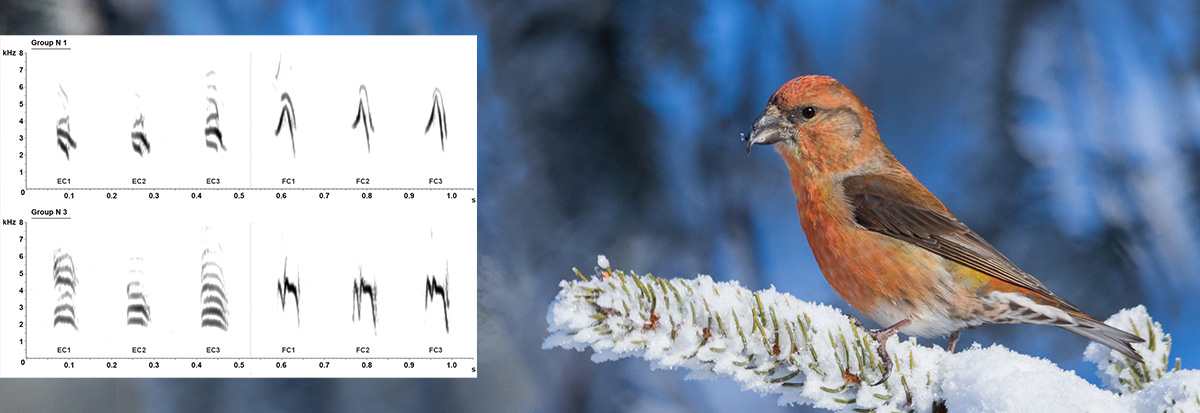
 avesrares.wordpress.com
avesrares.wordpress.com
For my trip, I listened intently and repeatedly to those recordings (especially 'Excitement' calls) that were found in Britain, or more precisely Scotland , these being now referred to as 'N' (Northern part of WP) followed by a number, in this attached study. There is a map accompanying each call, in the report. Those I might encounter in Scotland were as follows - calls N3, N4, N5, N6, N8, N9, N13, N15 which all belonged to Common Crossbill, N20 which belonged to Scottish Crossbill, and N21, N22 which belonged to Parrot Crossbill. Links in the attached document enabled me to listen to them. I specifically listened to N20 Scottish Crossbill 'Excitement call' and I found it to be possibly the most identifiable of all Crossbill calls, a sort of piping 'choo-choo-choo', but you need to also listen to those that are similar such as Common Crossbill N4, N5 etc and Parrot Crossbill too. I did this for a few weeks, to the point that I almost felt fairly confident that I would be able to identify Scotsbill if encountered. The differences are initially subtle but become more evident with repetition. Playing 'excitement calls' on my mobile phone 'periodically' would hopefully help draw birds in. I was all set to go, ready to record any responding birds, though of course switching from playing calls to recording calls was a bit of a pain, but I eventually got this off to a tee. And then I would also photograph or video birds using the same phone, so it all got a bit too much at times. I either had to concentrate on sound or images. Once the birds were perched on trees, or feeding, they were mostly silent. But occasionally they responded to my playback.
The Birding
Having tried places like Loch Mallachie and Poorhouse Woods several times and never seen or heard a Crossbill, I decided to spend time at the cross-tracks at Boat of Garten Woods (aka Fairy Hill Woods or Boat Woods). From the Boat public house at Boat of Garten, take the adjacent Kinchurdy Road until the last house on the right, where you can park up. Then take the obvious track to the right for quarter of a mile (or for ten minutes), until you come to an obvious cross-tracks, with a wide-open vista. You can see this on googlemaps or Ebird reports. There is an open glade on the far side. The 'cross-tracks' seem to be a sort of meeting place for Crossbills, though over three mornings from 5.30am -7.30am, one morning was excellent, the next average, then the third morning quieter. I recorded, and photographed, and videod a number of Crossbills. It is an excellent spot, very quiet with no traffic audible, which again is very important with recordings and sonograms when you do not have specialist recording equipment.
I think I had Parrot Crossbill, Scottish Crossbill, and Common Crossbill, and I would welcome your thoughts regards the attached photos even if they are not definitive without sound. Especially regards the large female that I think was a Parrot Crossbill. Can Scotsbills have such seemingly-large bills?
I had a great time, even though it was tough at times, I simply love this location, the beautiful weather helped but the morning sun-shine and invigorating smell of pine was just wonderful.
On 30 May 5.30am - 7am I had two flocks of 4 and 9 birds fly over, 4 'putative' Scottish Crossbills perched up and one photographed, and 2 'putative', photographed Parrot Crossbills. One of the sound-recorded Scotsbills stared down at me intently and inquisitively trying to assess the source of the Scotsbill 'excitement call' I was playing, and it then called as it moved deeper into trees. This was confirmed as a Scotsbill via sonogram.
On 31 May 5.30am - 7.30am I had a flock of 9 depart upon my arrival, then just 2 probable Common's perched up, then 10 Common's back by the car.
On 1 June 5am - 7am it was quieter, with just Common's present, though one large photographed bird (female) may have been a Scotsbill.
On 29 May I also checked out the area just to the north of Loch Vaa and close to Boat of Garten Woods, and I had 2 'putative' Scotsbills there, that responded to playback and called back identically in my opinion, though I did not record them.
Finally, I am massively indebted to Mark Lewis on Birdforum, who has been so helpful and patient with me. He obtained a sonogram from a bird I thought was a Scottish Crossbill on 30th, and indeed that certainly seems to be the case based on the sonogram he did for me, even though the recording was low in volume and hence only just usable. He said: - "I’ve had a look at the sonogram and it looks decent for Scottish Crossbill. Whether you can be sure with the recording quality I have no idea, but the shape of the long fundamental and shorter other elements fits this very well."
So, with the caveat that the recording was low in volume and hence not crystal clear, I was still really pleased that it seems that I correctly identified it as such, having spent so much time studying their calls. It doesn't mean, by any stretch of the imagination, that I would always be right.
Anyway, that is it. I hope it helps any other birders who want to positively see Scottish Crossbills. Obviously, it is important to consider that you go at the right time of year. Summer is not the best time. Early morning seems best at this time of year.
Poor photos are below, though I am proud of the 2 of the juvenile Common Crossbill.
Photos 1-3 - putative Parrot Crossbills (female and juvenile)
Photos 4-6 - sound recorded Scotsbill (the bill looks larger than it actually was)
Photos 7-9 Common Crossbill (adult and juvenile)
Photo 10 - just a female Common? Or Scotsbill?
Photo 11 - the cross-tracks at Boat of Garten Woods
Photo 12 - sunrise near Boat of Garten
I say 'putative' because they were sightings only based on sight.
The opportunity arose to return from 29 May to 1 June, at the same hotel - the Craiglynne in Grantown On-Spey for 3 nights for just £118, which is excellent value for the area which is usually far more expensive. The hotel's windows are crumbling but other than that it is fine, and excellent value for money, though I took my electric fan and toaster with me.
Birding was far tougher this time, just a month later, as we enter summer, and the forests seemed dead after the first few morning hours. The weather was absolutely sunny and lovely for all 3 days, but this has an adverse effect on birding as people flock outside, which is understandable, but Lochindorb was like 'Lochindorb-on-the Sea' with around a hundred people - kayakers, small rubber dingies etc, enjoying the water and even clambouring up the ramparts of the old castle on the small island. What this meant for the Black-Throated Diver pair sometimes present I don't know, but I suspect they might not be back for a while. I would go on to see a stunning Black-throated Diver further north, thanks to confidential information provided on Birdforum, so many thanks for that as it was a species I missed in April and this was my lifetime best sighting.
But the primary aim of this break was to connect with Scottish Crossbill.
I appreciate that there is a lot of debate about WP Crossbills being split into 3 species due to the absence of any divergence in DNA, but concurrently sympatric or assortative breeding does occur. Anyway, I cannot attempt to question that here. You will have made your own mind up about that I am sure.
Many people on BUBO have Scottish Crossbill on their list, partly based on the fact that back in the 1980s, 1990s, and 2000s it was thought that any large-billed Crossbills present would very-likely be Scottish, as it was wrongly thought that Parrot Crossbills were rare in the Highlands area all years. This well-documented study by Ron Summers and Stephen Buckland in 2007-08 study suggested that just 1% of Crossbills in the area were Parrots (around 100 pairs), whilst there were nearly 7,000 pairs of Scottish Crossbills and even more Commons. But you have to consider that the situation fluctuates year to year based on irruptions, but many people including those Scots who studied Crossbills closely, suggested that there were usually considerably higher numbers of Parrots present. But this explains why many birders comfortably ticked Scotsbill. Nevertheless, Summers and Buckland have carried out extremely informative and ground-breaking research and enabled the 3 species to be separated and identified via sound. Their endless research has been invaluable.
Crossbill numbers vary considerably, based on the prevailing available pine-cone crop of spruce, larch, and Scots Pine. So it is notoriously difficult to anticipate where exactly you might encounter Crossbills, though there are certain, well-known core areas on Speyside and Abernethy Forest that often deliver, such as the well-known locations of Anagach Woods (Poorhouse Wood section especially), Dell Wood, Carrbridge Cemetary, Curr Wood, Loch Garten / Loch Mallachie, Rothiemurchus, and Boat of Garten Woods (aka Fairy Hill Woods). These are the areas to try. The cones ripen in April, opening while they are still on the tree. Cone production is variable. With good seasons, a mature tree can produce 3000 cones, but only occurring every 3-5 years, while in between a tree will produce few cones, or none at all. So hence it becomes very difficult to predict their exact whereabouts. Some years are said to be excellent, some years poor, so this leads to Crossbills forever moving around even if Scotsbill are said to be somewhat sedentary, and it leads to irruptions from Norway or elsewhere when there is a pine-cone failure there. The reverse can happen. Indeed the site which was so profitable for me just a month ago was deadly quiet just a month later. So you have to work hard and put the footwork in.
There are further considerations for birders looking at crossbills - it is often suggested that any Crossbills feeding on Scots pine will be 'large-billed', and whilst this may hold true to some degree, it is important to remember all 3 species will take whatever is available at different times of the year, and even Common Crossbills, with smaller bills, may attempt to feed on these if the individual cones are partially open. Lindsay Cargill highlighted the complexity by highlighting that Scottish Crossbill can occur in alien conifer plantations but generally at particular times of the year, and that by February, Scottish Crossbills are usually back on territory in either native or plantation Scots pine. The problem being so is Common Crossbill, though some will feed on Larch until April if it is still present. But he also highlighted that during that specific winter, the Commons, and Scottish for that matter, were predominantly found on Scots pine throughout the year due to a Larch and Spruce crop failure. Generally though, he felt that Scottish move on to Larch in late summer and early Autumn and will flit between Larch and Scots Pine through the winter. I think this highlights the complexity of interpreting the movement of Crossbills.
It is also suggested that the way the respective Crossbill species open the pine-cones also helps with identification, but again, you need to understand the condition of individual pine-cones to truly be able to interpret this. Are they green or brown for example? I would have thought that this only comes with familiarity and experience, and for someone like me from Wolverhampton.........well you can imagine
Let me make this clear, this is just a simple attempt of a (simple) birder to summarise the Crossbill issues, nothing more. People like Lindsay and others will be laughing at my pathetic attempt to summarise what is an incredibly complex assessment. But their reports and blogs have provided me with incredible snippets of information over the years. Apologies also, if this report gets a bit technical at times, but the attached links are actually very helpful and are critical if you want to do a similar trip.
All 3 Crossbill species breed early, Common Crossbill first of all in February generally (though they may breed repeatedly in a very good pine cone year), then Scottish, then Parrot in April / May. So, it is worth noting whether any flocks seen contain fledglings that are not yet feeding independently, as these can be good pointers. Though I did indeed see a few streaky Crossbills, they were all feeding independently, so it didn't tell me much. At the end of April (my last trip), I encountered a small flock of 6 males, again this 'may' indicate that the females are sitting on the nest, and at that time of year this would likely mean they were Parrot or Scottish but again these are not totally-defining points, but simply things to consider. But I am repeatedly told by Scots birders that 'only' 'large-billed' Parrot Crossbills or 'small-billed' Common Crossbills can be safely assigned to species based on sight-only, and that really, you need to record the sound and try if possible to get a sonogram assessed. This can 'potentially' be done by using the 'record' facility on your I-phone. On my I-phone I used 'Voice Memo's'. Most experts use far more complex equipment to make recordings, but it goes to show that even with just an I-phone, such rudimentary tools can sometimes do the job successfully. But critically, ensure you are away from background noise such as distant traffic as this can compromise the ability to obtain a sonogram via your I-phone. The recording using just an I-phone may not be that clear volume-wise, so it is important that background noise is virtually excluded. The louder the call the better of course, so if you are close to the bird it is certainly better.
So, what is Scottish Crossbill?
No one really knows, but it is considered by some that the species may have evolved over a long period of time from the ancient or relict, Caledonian Scots Pine forest that was once far greater in size. Others feel that they are just a 'small-billed' form of Parrot Crossbill, or perhaps even a 'large-billed' Common Crossbill, and that they should be assigned merely as a sub-species. Ooops..........I've only gone and opened that can of worms
So, if you truly want to clinch identification of the majority of Crossbills, 'sound' is everything.
With my modern I-phone, I managed to record sound, as well as photograph and video Crossbills. The latter two via my scope of course.
The Sound Approach to Crossbills
Crossbills issue both 'excitement calls' whilst perched, or 'flight calls' though they may switch to one or the other in between flight and perched up. But of course they are often silent for long spells when feeding on pine-cones. There are also a series of complex of other calls such as alarm calls, and of course they sing. But primarily, the excitement calls and flight calls seem to be the defining ones as these are most prominently used, so these have been studied closely.
Following their extensive research, in 2008 Summers and Buckland referred to excitement calls as EcA through to EcE calls (Excitement Calls A-E). This was summarised in the following document via the Scottish Ornithological site, that clearly identified 5 calls which are linked: -

Identification of Scottish and Parrot Crossbills
SBRC position on Scottish Crossbill - update March 2022 Following analysis and consideration of the most recent findings on the use of the "type C" excitement call to identify Scottish Crossbill, as described below on the webpage, SBRC has concluded that the species can no longer be identified...
They were summarised as Excitement Call types A- E: -
Excitement call A, B, and E belong to Common Crossbills
Excitement call C belongs to Scottish Crossbill
Excitement call D belongs to Parrot Crossbill
Inevitably, over time, more and more research has taken place, and now in 2021, over 20 different 'Excitement' and 'Flight' calls have been identified from Crossbills in the Western Palearctic by Julien Rochefort and Ralph Martin.

Crossbill call types in the Palearctic – a birder’s perspective (Update eastern Palearctic call types, distribution areas and drivers of differentiation)
Julien Rochefort & Ralph Martin Ceci est la version anglaise de l’article. Cliquez ici pour lire la version française To jump directly to the call type index, click here To enter data int…
For my trip, I listened intently and repeatedly to those recordings (especially 'Excitement' calls) that were found in Britain, or more precisely Scotland , these being now referred to as 'N' (Northern part of WP) followed by a number, in this attached study. There is a map accompanying each call, in the report. Those I might encounter in Scotland were as follows - calls N3, N4, N5, N6, N8, N9, N13, N15 which all belonged to Common Crossbill, N20 which belonged to Scottish Crossbill, and N21, N22 which belonged to Parrot Crossbill. Links in the attached document enabled me to listen to them. I specifically listened to N20 Scottish Crossbill 'Excitement call' and I found it to be possibly the most identifiable of all Crossbill calls, a sort of piping 'choo-choo-choo', but you need to also listen to those that are similar such as Common Crossbill N4, N5 etc and Parrot Crossbill too. I did this for a few weeks, to the point that I almost felt fairly confident that I would be able to identify Scotsbill if encountered. The differences are initially subtle but become more evident with repetition. Playing 'excitement calls' on my mobile phone 'periodically' would hopefully help draw birds in. I was all set to go, ready to record any responding birds, though of course switching from playing calls to recording calls was a bit of a pain, but I eventually got this off to a tee. And then I would also photograph or video birds using the same phone, so it all got a bit too much at times. I either had to concentrate on sound or images. Once the birds were perched on trees, or feeding, they were mostly silent. But occasionally they responded to my playback.
The Birding
Having tried places like Loch Mallachie and Poorhouse Woods several times and never seen or heard a Crossbill, I decided to spend time at the cross-tracks at Boat of Garten Woods (aka Fairy Hill Woods or Boat Woods). From the Boat public house at Boat of Garten, take the adjacent Kinchurdy Road until the last house on the right, where you can park up. Then take the obvious track to the right for quarter of a mile (or for ten minutes), until you come to an obvious cross-tracks, with a wide-open vista. You can see this on googlemaps or Ebird reports. There is an open glade on the far side. The 'cross-tracks' seem to be a sort of meeting place for Crossbills, though over three mornings from 5.30am -7.30am, one morning was excellent, the next average, then the third morning quieter. I recorded, and photographed, and videod a number of Crossbills. It is an excellent spot, very quiet with no traffic audible, which again is very important with recordings and sonograms when you do not have specialist recording equipment.
I think I had Parrot Crossbill, Scottish Crossbill, and Common Crossbill, and I would welcome your thoughts regards the attached photos even if they are not definitive without sound. Especially regards the large female that I think was a Parrot Crossbill. Can Scotsbills have such seemingly-large bills?
I had a great time, even though it was tough at times, I simply love this location, the beautiful weather helped but the morning sun-shine and invigorating smell of pine was just wonderful.
On 30 May 5.30am - 7am I had two flocks of 4 and 9 birds fly over, 4 'putative' Scottish Crossbills perched up and one photographed, and 2 'putative', photographed Parrot Crossbills. One of the sound-recorded Scotsbills stared down at me intently and inquisitively trying to assess the source of the Scotsbill 'excitement call' I was playing, and it then called as it moved deeper into trees. This was confirmed as a Scotsbill via sonogram.
On 31 May 5.30am - 7.30am I had a flock of 9 depart upon my arrival, then just 2 probable Common's perched up, then 10 Common's back by the car.
On 1 June 5am - 7am it was quieter, with just Common's present, though one large photographed bird (female) may have been a Scotsbill.
On 29 May I also checked out the area just to the north of Loch Vaa and close to Boat of Garten Woods, and I had 2 'putative' Scotsbills there, that responded to playback and called back identically in my opinion, though I did not record them.
Finally, I am massively indebted to Mark Lewis on Birdforum, who has been so helpful and patient with me. He obtained a sonogram from a bird I thought was a Scottish Crossbill on 30th, and indeed that certainly seems to be the case based on the sonogram he did for me, even though the recording was low in volume and hence only just usable. He said: - "I’ve had a look at the sonogram and it looks decent for Scottish Crossbill. Whether you can be sure with the recording quality I have no idea, but the shape of the long fundamental and shorter other elements fits this very well."
So, with the caveat that the recording was low in volume and hence not crystal clear, I was still really pleased that it seems that I correctly identified it as such, having spent so much time studying their calls. It doesn't mean, by any stretch of the imagination, that I would always be right.
Anyway, that is it. I hope it helps any other birders who want to positively see Scottish Crossbills. Obviously, it is important to consider that you go at the right time of year. Summer is not the best time. Early morning seems best at this time of year.
Poor photos are below, though I am proud of the 2 of the juvenile Common Crossbill.
Photos 1-3 - putative Parrot Crossbills (female and juvenile)
Photos 4-6 - sound recorded Scotsbill (the bill looks larger than it actually was)
Photos 7-9 Common Crossbill (adult and juvenile)
Photo 10 - just a female Common? Or Scotsbill?
Photo 11 - the cross-tracks at Boat of Garten Woods
Photo 12 - sunrise near Boat of Garten
Attachments
-
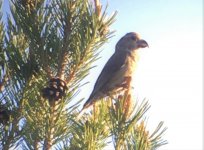 Big7.jpg199.4 KB · Views: 58
Big7.jpg199.4 KB · Views: 58 -
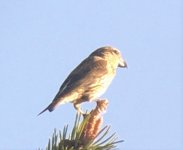 Big9.jpg75.8 KB · Views: 55
Big9.jpg75.8 KB · Views: 55 -
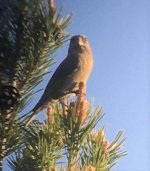 Big8.jpg138.5 KB · Views: 59
Big8.jpg138.5 KB · Views: 59 -
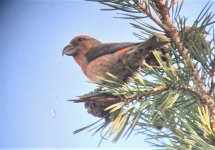 Big10.jpg214.4 KB · Views: 62
Big10.jpg214.4 KB · Views: 62 -
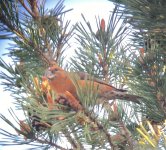 Big13.jpg452 KB · Views: 63
Big13.jpg452 KB · Views: 63 -
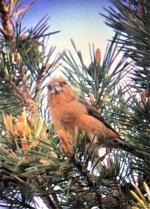 Big22.jpg1.9 MB · Views: 62
Big22.jpg1.9 MB · Views: 62 -
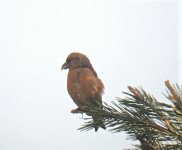 Big6.jpg70.6 KB · Views: 57
Big6.jpg70.6 KB · Views: 57 -
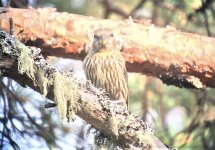 Big2.jpg390 KB · Views: 53
Big2.jpg390 KB · Views: 53 -
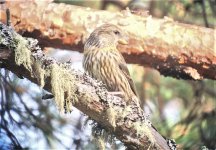 Big3.jpg406.9 KB · Views: 52
Big3.jpg406.9 KB · Views: 52 -
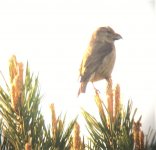 Big15.jpg161.1 KB · Views: 50
Big15.jpg161.1 KB · Views: 50 -
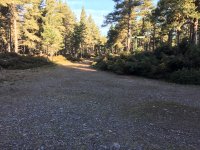 crosstracks big.JPG5.6 MB · Views: 48
crosstracks big.JPG5.6 MB · Views: 48 -
 SUNSET Grantown On Spey.jpg2.5 MB · Views: 53
SUNSET Grantown On Spey.jpg2.5 MB · Views: 53
Last edited:




